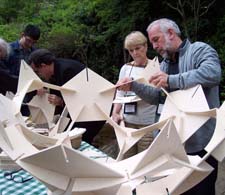
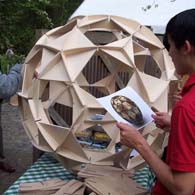
Figure 17a: Starting to build the sphere
Figure 17b: First part
Figure 17c: Adding the second part
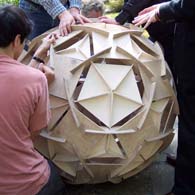

Figure 17d: Second part
Figure 17e: Almost finished
Figure 17f: Complete Polyhedron
7.1. equal Groups. Besides the Platonian and the Archimedean polyhedra there are some more convex polyhedra that you can build using convex regular faces only. This group of polyhedra is known as the Johnson Polyhedra. Among the Johnson Polyhedra we can also find some members which are two-colourable. Some of them are shown in Figure 18.

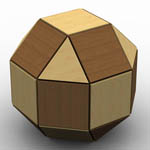
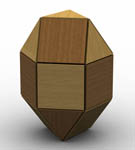
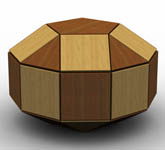
Figure 18: Two-colourable Johnson solids
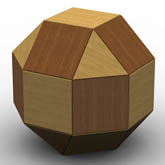

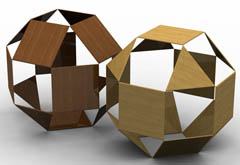
Figure 19: TPseudo Rhombicuboctahedron split up in two identical parts
References
[1] M.C. Escher, Regelmatige Vlakverdeling, Stichting de Roos, 1958.
[2] Greg N. Frederickson, Hinged Dissections: Swinging and Twisting, Cambridge University Press, 2002.
[3] Wentzel Jamnitzer, Perspectiva corporum regularium, Ediciones Siruela, 1993, 2006.
[4] R. Buckminster Fuller, Synergetics, Macmillan Publishing, 1975.